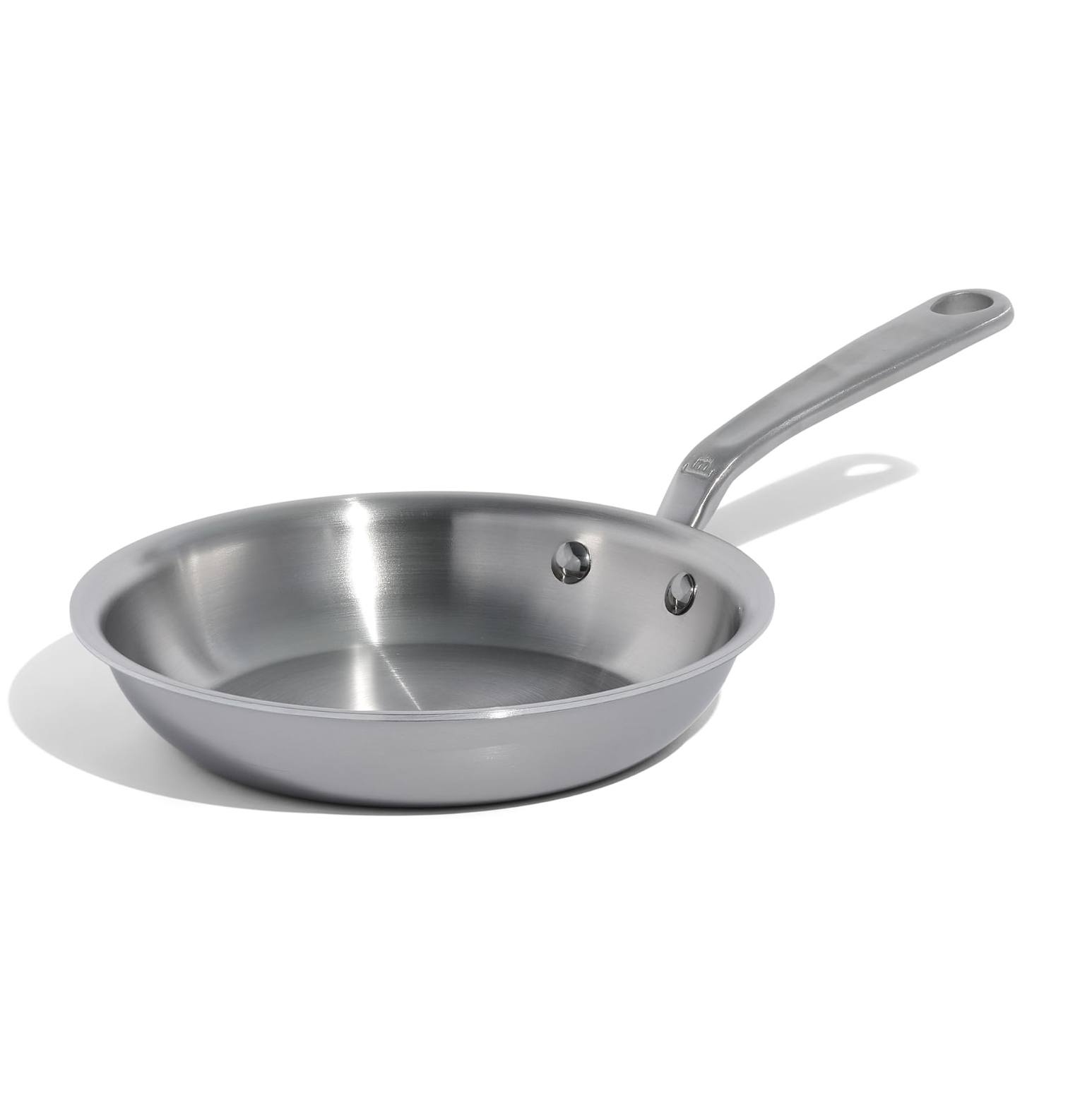Shakshuka Danish
Makes 6 large danishesI've always loved Shakshuka—a North African and Middle Eastern dish of eggs poached in a spiced tomato and red pepper sauce, typically served with bread to soak it all up. I thought, why not combine it with my ultra-flaky Danish dough to create a handheld version?
It turned out to be more challenging than I expected, but after several tests, I found a method that works. To create a cavity deep enough for the egg, you'll need to bake the Danish with a ramekin filled with pie weights. Alternatively, you can simply press down the center, fill and bake with the shakshuka sauce, then cook the eggs separately—either by frying or poaching—and place them on top. This approach ensures the eggs are cooked to your preference and simplifies the assembly process. With either approach, the result is a flavor-packed savory pastry that's as impressive as it is delicious.
WHAT YOU’LL NEED
INGREDIENTS
½ recipe danish dough (recommend preparing a full batch & freezing the other half for future use)
1 egg, beaten with 1 tbsp water (for egg wash)
Shakshuka Filling
1 tablespoon olive oil
½ small red onion, small dice
½ red bell pepper, small dice
2 cloves garlic, minced
½ teaspoon paprika
½ teaspoon ground cumin
¼ teaspoon cayenne pepper
½ teaspoon kosher salt
1 (15-ounce) can crushed tomatoes
6 large eggs, room temperature
Optional: fresh dill, red pepper flakes, and flaky salt for garnish
DIRECTIONS
Roll Out & Proof the Dough
On a lightly floured surface, roll out the Danish dough into a ½-inch thick rectangle. Use a 4-inch circular cookie or biscuit cutter to cut out rounds. If you don't have a circular cutter, cut the dough into 4-inch squares instead.
Transfer the dough pieces to a parchment-lined sheet pan, spacing them evenly. Loosely cover with plastic wrap and let rise in a warm spot until puffed, 45–60 minutes.
Make Shakshuka
In a sauté pan, heat 1 tablespoon of olive oil over medium heat. Add diced red onion and red bell pepper; cook until the onion is translucent and the pepper softens, 7–10 minutes.
Stir in minced garlic, paprika, cumin, cayenne pepper, and kosher salt. Cook until fragrant, about 1 minute.
Pour in crushed tomatoes and stir to combine. Bring to a simmer and cook until the sauce thickens slightly, 7-10 minutes. Taste and add more salt if needed.
Remove from heat and let cool.
Assemble & Bake
Preheat oven to 375°F (190°C). Brush the tops of the risen dough with egg wash.
Grease the outside of stainless steel ramekins or small oven-safe bowls and press them into the center of each dough piece. Fill the ramekins to the rim with pie weights or dried beans. Bake until the edges of the Danish are browned and set, 18–20 minutes.
Using an oven mitt, carefully remove the ramekins. Spread a couple of spoonfuls of the shakshuka mixture into each center, then top with an egg. If the cavity isn't deep enough to hold the entire egg, crack it into a separate container and add only the yolk and enough white to fill. Alternatively, cook the eggs separately and add them later.
Cover with foil and bake until the eggs reach your desired doneness, 15–20 minutes.
Optional: To prevent the eggs from becoming rubbery, place a small oven-safe bowl filled with boiling water on the sheet tray. This creates steam under the foil, helping the eggs cook more evenly. If using this method, the eggs may set faster, in about 12–13 minutes.
Top with a drizzle of oil, a sprinkle of salt, and fresh dill and red pepper flakes, if desired.
RECIPE NOTES & TIPS
Danishes are best enjoyed immediately or on the day they're made. For leftovers, wrap them tightly and freeze. To reheat, place frozen Danishes on a parchment-lined baking sheet and bake at 375°F (190°C) for about 10 minutes, until warmed through.
The rise times vary depending on the temperature of the dough and the room. The dough could rise in a faster or longer time than what I have listed. Go based on how the dough looks, rather than the time. If it isn’t rising well, place it in a turned-off oven with a larger pan of boiling water on the rack below, then close the door. This creates a warm, humid environment ideal for rising—just be sure no one accidentally turns the oven on!
Monitor the eggs closely during the second bake to achieve your preferred level of doneness. Remember that eggs will continue to cook slightly from residual heat after removing from the oven. To prevent the eggs from developing a rubbery texture—a common issue with baked eggs—consider placing a small oven-safe bowl filled with boiling water on the baking sheet. This method creates steam under the foil, helping the eggs set gently and cook more evenly.








